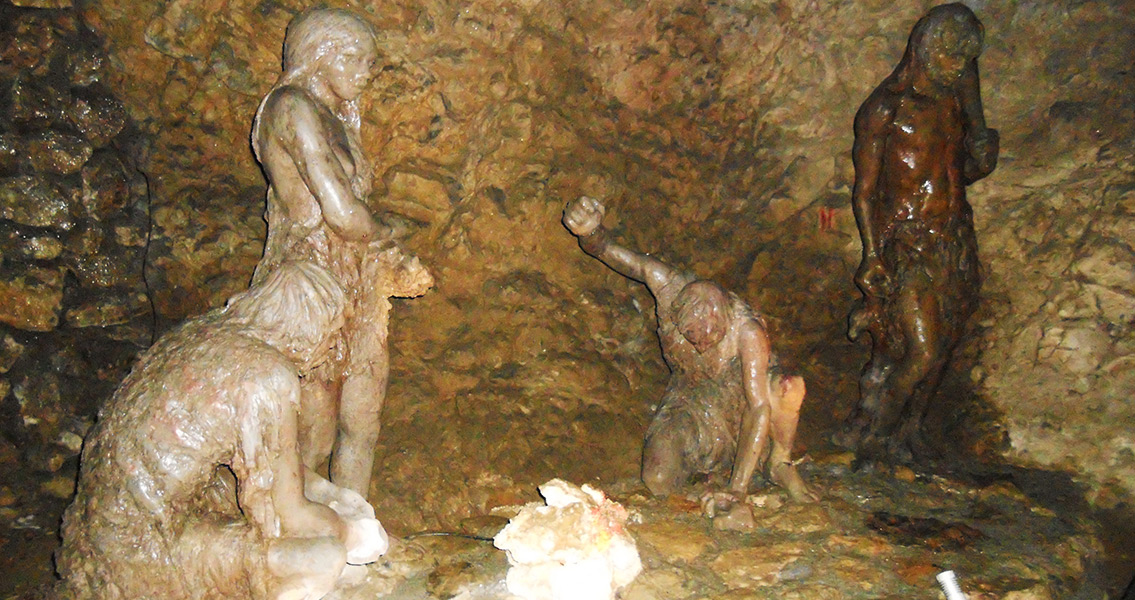<![CDATA[New research suggests that Neanderthals kept returning to a coastal cave site located in Jersey, UK, from 180,000 years ago until approximately 40,000 years ago. The research, a re-examination of the granite cliffs of La Cotte de St Brelade, was conducted by archaeologists from the University of Southampton, along with experts from two additional universities as well as the British Museum. It takes another look at mammoth bones and other artifacts originally removed from the site in the 1970s. The team matched the types of stone material used to construct tools to the detailed maps showing the geology at the bottom of the sea, to determine how they were made, modified and carried. With this information, they were able to draw conclusions about what resources were available to the Neanderthals over a period of tens of thousands of years, and where they travelled from. The study’s lead author, Dr. Andy Shaw with the Centre for the Archaeology of Human Origins (CAHO) at the University of Southampton, said in a statement released by the University: “La Cotte seems to have been a special place for Neanderthals. They kept making deliberate journeys to reach the site over many, many generations. We can use the stone tools they left behind to map how they were moving through landscapes, which are now beneath the English Channel. 180,000 years ago, as ice caps expanded and temperatures plummeted, they would have been exploiting a huge offshore area, inaccessible to us today.” Previous research had been focused on specific levels within the site where the mammoth bones were concentrated, this new study, however, takes a long-term perspective, studying how Neanderthals used the site and how they explored the surrounding area for more than 100,000 years. The researchers discovered that the Neanderthals kept returning to this particular location, despite the effects on the landscape caused by significant changes in climate. During Ice Ages, they travelled over cold, open landscapes to get to the site, which is now underwater. They continued to visit as the climate warmed causing Jersey to become a high point in a wide coastal plain. Dr. Beccy Scott with the British Museum says in the statement from the university: “We’re really interested in how this site became ‘persistent’ in the minds of early Neanderthals. You can almost see hints of early mapping in the way they are travelling to it again and again, or certainly an understanding of their geography. But specifically what drew them to Jersey so often is harder to tease out. It might have been that the whole Island was highly visible from a long way off – like a waymarker – or people might have remembered that shelter could be found there, and passed that knowledge on.” Dr. Matt Pope, from the Institute of Archaeology at UCL, agrees with Dr. Scott, adding, “La Cotte de St Brelade is probably the most important Neanderthal site in northern Europe and could be one of the last known places that Neanderthals survived in the region. It was certainly as important to them as it is to us, as we try and understand how they thrived and survived for 200,000 years. With new technology we have been able to reconstruct the environment of the La Cotte Neanderthals in a way earlier researchers couldn’t. Our project has really put the Neanderthal back into the landscape, but emphasised how significant the changes in climate and landscape have been since then.” Professor Clive Gamble, with CAHO, who lead the research, says in the University’s statement: “Jersey is an island that endures, summed up by the granite cliffs of St Brelade’s Bay. The elements which led to Neanderthals coming back for so many thousands of years shows how this persistence is deep rooted in Jersey’s past. Our project has shown that more unites the past with the present than separates. We are not the only humans to have coped successfully with major environmental changes. Let’s hope we are not the last.” The findings have been published in the journal Antiquity. ]]>
Why did Neanderthals Keep Returning to the Same Jersey Caves?
